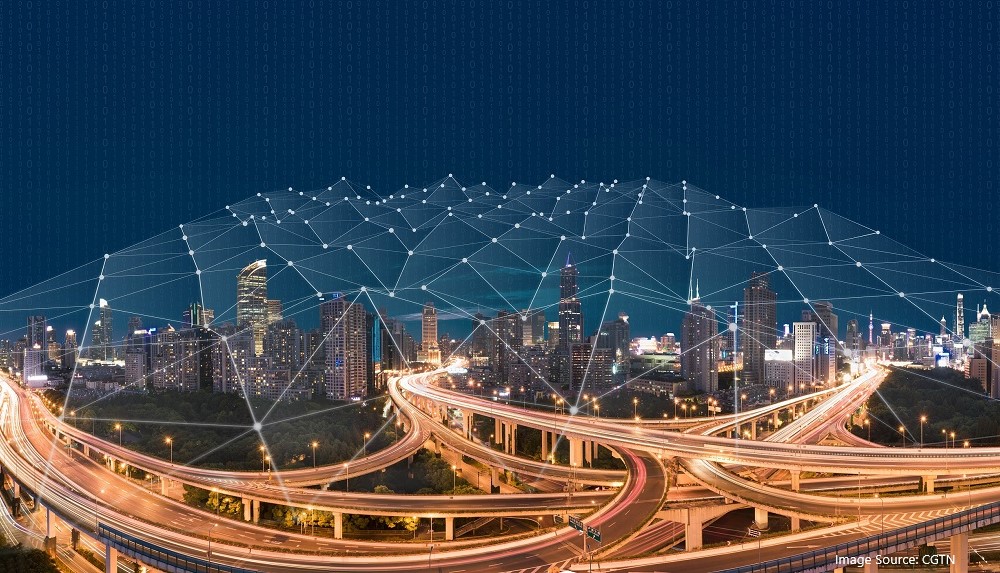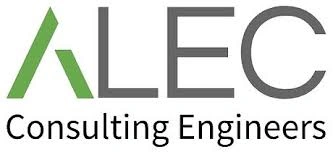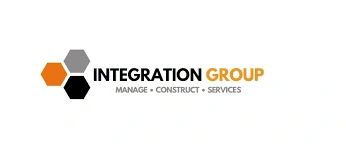
Infrastructure is the backbone of any economy, providing the essential services and facilities that enable societies to function effectively. As the world grapples with rapid urbanization, population growth, and aging infrastructure, the need for innovative solutions to modernize and optimize infrastructure is greater than ever. Emerging technologies are playing a key role in transforming how infrastructure is designed, built, and maintained. These advancements promise to deliver billions in benefits, from cost savings to enhanced efficiency and sustainability. Here are five technologies that are poised to revolutionize infrastructure and bring immense value.
1. Digital Twins
Digital twin technology is a powerful tool that is transforming infrastructure management and development. A digital twin is a virtual replica of a physical asset, system, or process, which is continuously updated with real-time data. By using sensors and IoT devices, digital twins can simulate the performance of infrastructure projects such as bridges, roads, rail networks, and buildings. This technology allows stakeholders to monitor, analyze, and optimize infrastructure throughout its lifecycle.
The benefits of digital twins are enormous. They can help reduce construction costs by predicting issues before they occur, allowing for proactive maintenance and reducing downtime. By optimizing resource use and improving efficiency, digital twins can extend the lifespan of infrastructure assets, potentially saving billions in maintenance and repair costs. Additionally, digital twins enable better decision-making by providing real-time insights into the condition and performance of infrastructure, helping to avoid costly errors and overruns during construction projects.
2. Building Information Modeling (BIM)
Building Information Modeling (BIM) is another groundbreaking technology reshaping infrastructure development. BIM is a collaborative process that involves creating and managing digital representations of the physical and functional characteristics of a project. It allows architects, engineers, contractors, and other stakeholders to work together in a shared digital environment, enhancing coordination and reducing errors.
By providing a detailed, 3D visualization of a project from the planning phase through construction and operation, BIM reduces the likelihood of design clashes, construction rework, and delays. The ability to identify potential issues early in the design process translates to significant cost savings, as project teams can make adjustments before costly mistakes occur. According to industry estimates, BIM can reduce infrastructure project costs by up to 20%, potentially saving billions globally.
3. Artificial Intelligence (AI) and Machine Learning
Artificial Intelligence (AI) and machine learning are rapidly gaining traction in infrastructure development, delivering transformative benefits across various sectors. These technologies enable the analysis of vast amounts of data generated by infrastructure systems, such as traffic patterns, weather conditions, and maintenance schedules. AI can identify patterns and trends that are not immediately apparent to human operators, enabling predictive maintenance and smarter asset management. This proactive approach reduces the need for emergency repairs, which are typically more expensive, and minimizes disruptions to traffic and other services. AI can also optimize the design and construction process by automating certain tasks, improving accuracy, and reducing project timelines. In the long run, AI has the potential to save billions by reducing the cost of maintaining and upgrading infrastructure while improving its performance and longevity.
4. 3D Printing
3D printing, also known as additive manufacturing, is revolutionizing the construction and infrastructure sectors by offering new ways to design and build structures more efficiently and affordably. 3D printing allows for the on-site production of components using automated machines, reducing both labour costs and material waste.
In infrastructure, 3D printing has been used to construct bridges, buildings, and even roadways. The ability to create customized components on-demand reduces the time it takes to build infrastructure and cuts down on transportation costs. Additionally, 3D printing allows for greater design flexibility, enabling more sustainable and efficient structures that require fewer resources to build and maintain. By reducing the cost of materials, labour, and transportation, 3D printing could save billions in construction expenses while also reducing environmental impacts.
5. Smart Sensors and IoT (Internet of Things)
Smart sensors and IoT devices are becoming an integral part of modern infrastructure, enabling real-time monitoring, data collection, and analysis. These devices can be embedded in infrastructure systems, such as roads, bridges, tunnels, and buildings, to gather data on their performance and condition. This data can then be used to optimize maintenance schedules, enhance safety, and improve the efficiency of infrastructure operations.
For instance, smart sensors can detect structural weaknesses in bridges or buildings, providing early warnings before failures occur. In transportation, IoT-enabled traffic management systems can optimize the flow of vehicles, reducing congestion and emissions while improving road safety. The widespread use of smart sensors and IoT in infrastructure could lead to billions in cost savings by improving asset management, reducing maintenance costs, and extending the life of infrastructure systems.
These innovations can reduce costs, improve efficiency, and enhance the sustainability of infrastructure projects. As cities and countries around the world invest in upgrading and modernizing their infrastructure, the adoption of these technologies will be critical in delivering billions of dollars in savings and driving the next generation of smart, resilient infrastructure systems that will meet the challenges of the future
Draftech – Your Project, Our Expertise
Testimonials
Thank you for all your efforts on our projects; they have been an invaluable contribution to their success. We look forward to working with you on future projects.
Ian Ferguson MPM Group
Jess and Karl at Draftech were amazing. The communication from the start was prompt, and the entire process was extremely easy. We needed their knowledge on Air Schematics, and they had made one up for our buildings that we service. Thanks so much, and we will be using you guys in the future. Cheers, Air Control Australia.
Greg Colebrook AirControl Australia
With Draftech’s thorough understanding of building services modelling and close attention to detail, Forth has been afforded the opportunity to outsource some of our BIM projects with absolute confidence in the accuracy of the final product.
Gary Murdoch Forth Consulting
Very professional and efficient organization. Delivered a great product to a tight deadline.
ACE Power
Karl and the team are very professional and have a vast knowledge of BIM coordination.
Dwayne Willaims Babinda Electrics
We had multiple large projects with tight deadlines and needed a company we could trust. The teams delivery, attention to detail and understanding of what is being designed is always executed to a high standard.
Martin O’Donovan Envar Engineers
Draftech offered a flexible and reliable approach to working collaboratively with our team. They met our expectations and quality requirements and also offered up new ideas.
Draftech have proven to be a valuable and trustworthy resource and we will continue to work with Draftech on other projects.
Simon Marsden Umow Lai
Draftech is different from others in the professionalism and features they provide.
The ability to walk through projects in real time online provides invaluable insight into problem areas and helps provide an efficient resolution on the spot without many phone calls, emails and the necessity for us to paw through countless drawings to understand the issues.
Todd Morris Manager - Air mech
Draftech were put forward to FIP Electrical as the solution to Coordinate, Model, carry out clash detection, provide Electrical Services Shop Drawings, as built documentation and completed electrical model.
Simon Thorpe FIP Electrical
In close collaboration Draftech set up all our systems and model deliverables. In this process Draftech have proven to be a valuable resource for us and demonstrated commitment, understanding and professionalism.
David Skelley DJCoalition
Draftech’s attention to detail and proactive nature throughout the project assisted us in identifying issues before becoming evident on site, saving us both time and unexpected costs.
Matt Payne PJM Engineering Services
They delivered very high quality Revit models and associated 2D documentation at key milestones, working to a tight budget and in strict accordance with the Architects’ BIM requirements.
Peter Thomas Geoff Hesford
We found Draftech’s work to be of high standard and the team delivered exactly as agreed, in fact, when we considered the project complete, Draftech put further resources into the project as they were not satisfied.
John Johnson Beca
Engaging Draftech during design gave us the tools to make smart decisions.
Hansen Yuncken Design Manager - Michael Harkins
The drafting service is timely, reliable and fit for purpose for the built environment.
Peter Harvey Harvey Industries
Draftech stands apart from other drafting services that we have previously used in their attention to detail and ability to adapt to the individual client’s requirements.
Doug Holt McCaig Aircon
I can confidently recommend Draftech as a solid and reliable supplier, and experts in their field. I look forward to working with them again in the near future.
Chris Behan Norman Disney & Young
After seeing the benefits Draftech provided us on the Townsville Hospital Redevelopment we have set up a relationship with Draftech and intend to continue to use their BIM knowledge and skills for our future projects.
Brad Lund Energy Power Systems
Draftech has no competition as they are in a class of their own.
John Boyes Babinda Electrics
Draftech Developments Drafting and Design Capabilities, in conjunction with their outstanding level of Client service and support has provided great solutions to our engineering and Drafting Design portions within our Gorgon Barrow Island Project.
Aaron Hazelton Applied Electro Systems Pty Ltd
Draftech set up necessary systems and workflows very quickly, but also setup auditable estimating and weekly cost tracking processes that we utilised, requiring little maintenance.
TOM PURDON MPM GROUP
































